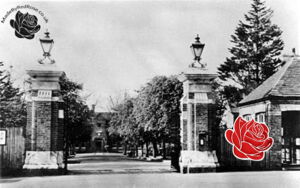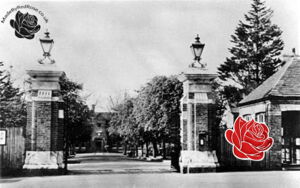Institutional Child Abuse's Social Media Accounts
Know a Social Media Account Linked to Institutional Child Abuse?
Want to add information? Log in to your account to contribute accounts and phone numbers.
INSTITUTIONAL CHILD ABUSE AT BEECHOLME CHILDREN'S HOME IN BANSTEAD, SURREY
Beecholme was a historic children’s home situated on Fir Tree Road in Banstead, Surrey. Established in 1879, it originally served as a Residential School designed to support impoverished children from the slums of Kensington and Chelsea. The institution operated under a village system, with individual houses managed by 'house parents' who oversaw the daily lives of the children. The complex included a school, chapel, extensive playing fields, and other facilities. The regime was notoriously strict, with corporal punishment being a common and frequent disciplinary measure. Allegations of sexual abuse against the children have also been reported, casting a dark shadow over the home’s history.Over the years, the home’s intake expanded to include children from various parts of London, with responsibility eventually transferred to the London County Council, and later to Wandsworth Borough Council. In 1974, the decision was made to close the facility, and the property was sold for development into the High Beeches Estate. The site was demolished in 1975, erasing the physical presence of the once-thriving institution.
One survivor, James Reeves, born in 1946, shared his harrowing experiences at Beecholme. He recounted being placed in Jasmine House, one of the residential units within the home. Reeves’ earliest memories include his time in foster care, where he was reportedly subjected to abuse by his foster family, the Porters. He remembered a birthday gift from his foster father—a brown three-wheel tricycle—and the only positive memory from that period. However, his recollections quickly turned dark, describing being locked in cupboards and subjected to abuse by women and older children.
Reeves’ next vivid memory was arriving at Beecholme, specifically Jasmine House, where he was handed over by his mother to the House Mistress, Miss Cullen. At age 12, he endured a brutal and traumatic experience. He was called into a dining room, stripped naked, and physically beaten on his bottom by Miss Cullen. Subsequently, he was taken into a large bathroom with two baths, one for boys and one for girls, where he was bathed alongside other children. The water was never changed, and the environment was unhygienic and crowded.
After his bath, Reeves was marched to his dormitory, but shortly thereafter, he was forcibly taken downstairs by a man who removed his nightshirt. He was then made to face a wall in a room where he was repeatedly slapped on his bare bottom. Eventually, he was blindfolded and led into a room where he was sexually assaulted by two individuals. One attempted to perform anal sex but stopped when Reeves screamed. He also described being forced to suck on a hard object in his mouth, which caused him to cry and shake with fear. The assault left him traumatized, and he was returned to his dormitory, where he lay trembling, crying, and too scared to move.
Reeves’ account details the terrifying routine of abuse, including being pulled from his bed at night, facing physical and sexual violence, and enduring emotional trauma. Despite attempts to seek help, he felt ignored and helpless, with staff dismissing his complaints. Eventually, he was transferred to Hutton children’s residential home in Shenfield, Essex, where he experienced a different environment. There, he participated in a Christmas party with the Billy Cotton Band Show, which was televised. During this event, Reeves was subjected to further abuse by Alan Breeze, a performer he later identified. Breeze, along with others, had sexually assaulted Reeves in a men’s toilet during the event, an incident he tried to report but was ignored by staff and fellow children.
Following this, Reeves was taken to The Maudsley Hospital, where staff expressed concern about his mental health. He ran away from the hospital, feeling that no one believed his story, and was eventually returned to the home, where he was prescribed anti-depressants. The trauma from his experiences continues to haunt him to this day.
Another survivor recounted the brutal and sadistic treatment by staff members at Beecholme. Referred to only by his account, he described being called by number and subjected to frequent corporal punishment by the headmaster, Mr. Rayner, and the matron, with no regard for guilt or innocence. The staff had complete control over the children’s lives and possessions, often confiscating small amounts of money sent by their families. Conditions were harsh, with children subjected to near-starvation diets, limited clothing, and freezing environments during winter, often with no proper footwear or warm clothing, leading to chilblains and infections.
Further accounts reveal the abuse extended to physical violence inflicted by female staff members, who would instruct male staff to carry out punishments. One such incident involved a staff member, Aunty Joy Walker, who beat a boy with a metal vacuum pipe, leaving him bruised and cut. The boy’s father was deliberately kept from seeing his son’s injuries, with staff claiming he had fallen down the stairs or been moved elsewhere. These abuses persisted over many years until staff changes and relocations, such as a move to Throwley Road in Sutton, where similar conditions and treatment reportedly continued.
Other memories include the severe cold during winter, with children forced to go outside in all weather to use outdoor toilets, and the monotony of life, such as routine trips to Dymchurch seaside, which were marred by the harsh conditions and lack of proper recreational facilities. Children recall the bleakness of their daily routines, the lack of toys or entertainment, and the constant exposure to the elements, which caused suffering and discomfort.
In 1968, a fire destroyed the old brick church at Beechholme, which had stood for 90 years. The blaze left charred timbers and pews scattered across the floor, marking the end of an era for the institution.
Today, efforts are underway to document and reflect on the history of Beechholme. Dilly Braimoh, a freelance journalist from St James Road, Sutton, who spent much of his childhood at Beechholme, is producing a documentary for Thames TV. His motivation is to trace the lives of former residents and understand how their experiences at the home affected their futures. Braimoh’s own memories are surprisingly positive, and he believes he may have had a better start in life there than he would have elsewhere. Some former residents have gone on to successful lives, while others have faced difficulties, including incarceration and family struggles.
The legacy of Beechholme is also reflected in its school song, which celebrates the institution’s ideals but starkly contrasts with the reality of its history. The song references the open downs, the camaraderie, and the lessons learned, but also alludes to the harsh conditions, poor food, and strict discipline that characterized life there.
Today, the site of Beechholme has been replaced by modern housing, but the stories of its past residents serve as a sobering reminder of the abuses that occurred within its walls. The memories of those who suffered continue to resonate, highlighting the importance of acknowledging and addressing past institutional failings and ensuring such abuses are never repeated.

